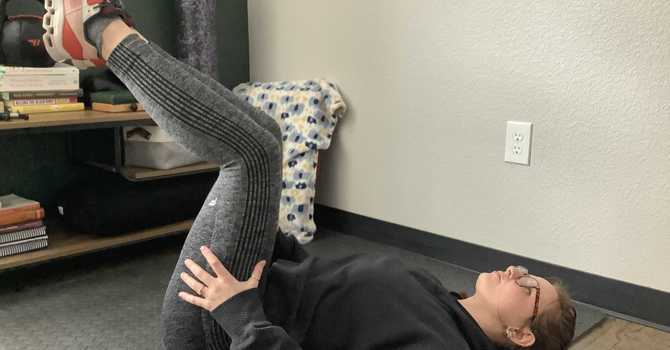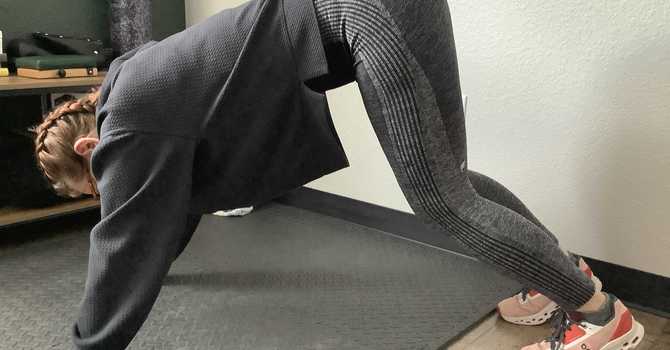
We're kicking off our first blog post on Collaborative Care with local LMT, Janette Elder!
First off, what exactly do we mean when we are talking about the term "collaborative care" ?
As described by Linda Kimball in the Journal for Healthcare Quality:
Collaborative care is a system of patient care delivery that focuses on the achievement of outcomes within effective and appropriate time frames and resources. It addresses the entire episode of illness, bridging all clinical settings in which the patient receives care. Through the collaborative efforts of multiple caregivers, a plan of medical care is mapped out that results in a clinical path. The clinical path can improve satisfaction levels for patients, nurses, rehabilitation staff, and physicians by establishing a method of reinforcement for everyone involved in efficient delivery of care.
Working alongside your other providers is incredibly important to us. We want to have open communication with them to ensure that we are on the same page and working toward the same goals.
Lately, we feel like we've been asked a lot about massage and chiropractic.
"Can I see you and a massage therapist at the same time?" "Will the massage screw up my treatment?"
"Will this treatment screw up my massage?"
We aim to answer some of these questions and more by interviewing our favorite, local massage therapist, Janette Elder! She owns her own business called Joyful Spirit Massage Therapy here in Erie. We met Janette a few months ago and have had the opportunity to see some awesome results by co-managing patients.
We asked Janette three questions about how she utilizes collaborative care (specifically chiropractic) in her treatment of her patients.
WC = Brynn & Zach
JE = Janette
WC: What conditions/situations do you think someone would most benefit from a massage? What type of patients do you see the best results in?
JE: I see a variety of conditions in my practice. Ranging anywhere from those feeling tension or pain in their neck/shoulders/jaw from stress (work, personal, social) to those dealing with acute injuries - i.e. overtraining, sudden injury or accident, to long-term and chronic conditions - i.e., old injuries that never healed correctly, those that have been nagging and can no longer be ignored. Each individual is unique and so is their reason for seeking massage. A good massage therapist will meet each individual client where they are and help them along the path to health. I frequently get clients who start out with "I don't think massage can help, but ....". In some cases massage can't help the primary injury, like in the case of a torn ligament, but it can help relieve pain in the muscles that are compensating (or decompensating) while the body is trying to heal. Massage isn't going to fix a torn ligament, but it can support the body while it's working to heal the injury and keep it from building prohibitive scar tissue. that will create problems in the future My ideal clients are the compliant ones ;) - those that are honest in what they have been doing, and those that follow instructions for self-care after the massage ;).
WC: What situations do you refer to a chiropractor?
JE: I love having a good network of chiropractors to refer to! That really goes for all types of modalities because everyone approaches the body differently and different approaches are needed to reach clients where they are in order to get a good result. When I am working with a client, I am always trying to read what's going on with all the systems in the body. When it's outside my scope of practice, I am happy to refer them to another practitioner. There are times when massage as a standalone treatment isn't going to get the desired result/relief and a complementary modality is needed. I might get lucky from time to time and get a rib to adjust, or a wrist, maybe even a spinal adjustment - but when that happens, it's by chance. Skeletal manipulations are outside my scope of practice but oftens times that's exactly what someone needs in order to get relief.
WC: Can someone see a chiropractor and LMT at the same time? Are there situations you recommend both?
JE: When the musculature and the skeleton aren't working together as they should be, neither modality is going to bring the relief the client is looking for, but a well -timed visit to each practitioner (chiropractor + massage) can bring the relief that's needed. Let's say I have a client who is coming to me for a stiff or sore neck, I give them a massage focused on relieving the muscle tension but in the end, they may have gotten some relief, but they still have pain or discomfort. That's the perfect time to get into a chiropractor ASAP, get the skeletal adjustment and then the body can return to homeostasis. This scenario can work for a spinal misalignment, knee, ankle, wrist, hip and for many conditions - headaches, jaw pain, nerve pain, etc. It can also work in the reverse - the chiropractor is making the skeletal adjustment but it just won't hold because the muscular tension keeps pulling the skeleton out of alignment. Pair the adjustment with a massage immediately following and the two work in synchronicity.
Thank you to Janette for taking the time to give us these AMAZING & thorough answers. We think she did an amazing job of answering some of the commonly asked questions/thoughts people have surrounding massage and chiropractic.
Stay tuned for next week's Collaborative Care interview!
Zach 






